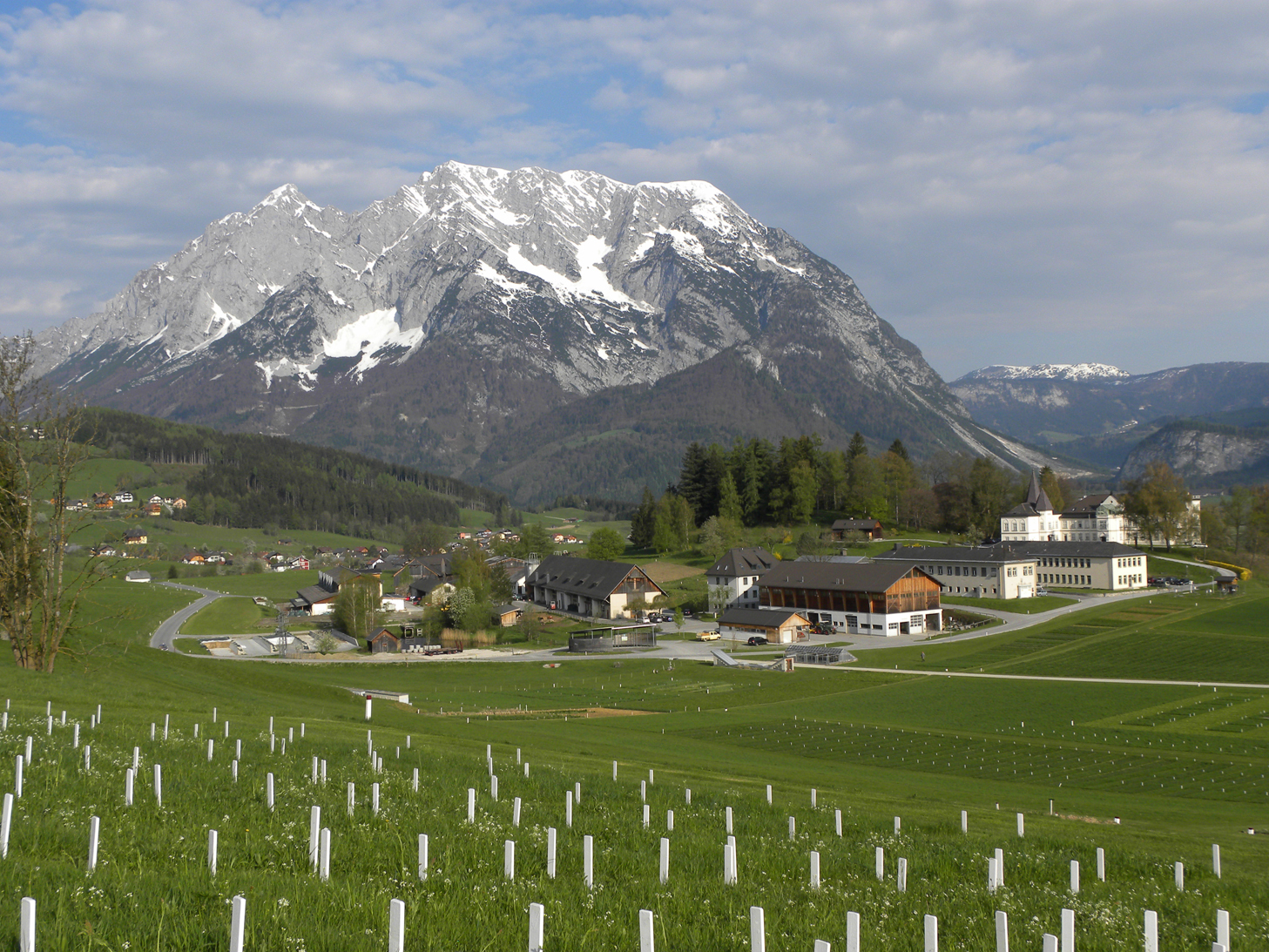
organization
Research
As the largest department of the Federal Ministry of Agriculture, Forestry, Regions and Water Management (BML), the Raumberg-Gumpenstein Higher Federal Teaching and Research Institute ( HBLFA the driving force for sustainable business in the agricultural, food and environmental sectors of rural areas in agricultural research .
Goals and tasks
Forward-looking, innovative and practice-relevant research projects are primarily carried out in cooperation with national and international organizations. Particular emphasis is placed on ensuring that the knowledge gained is passed on quickly and efficiently to all target groups (science, politics, advice, teachers, companies and, above all, farmers) so that the feedback can flow back into new research projects.
Position
Due to its central location in the Alpine region - very conveniently located at the intersection of the Limestone and Central Alps - the site is representative of a large part of the Alpine region with a rainfall of around 1000 mm and an average annual temperature of 7.2°C. The experimental results achieved can be directly transferred and applied in large areas at home and abroad. There are also branch offices in other important production areas.
Resources and equipment
In total, the HBLFA Raumberg-Gumpenstein is currently working on around 200 hectares, 35 hectares of which are experimental plots, for the implementation of research projects. To take into account the different soil and climate conditions within the federal territory, the HBLFA permanent branch offices in Wels-Thalheim, Lambach-Stadl-Paura, Admont, Oberalm near Hallein ( LFS Winklhof ), Piber and Kobenz near Knittelfeld. In addition, a teaching forest of around 170 hectares is managed for practical lessons.
Almost 250 people are employed in the entire research operation, more than 50 of them in key positions as academics and technicians. The institutes for livestock research, crop production and cultural landscape, species-appropriate animal husbandry and health as well as organic farming and biodiversity of livestock are divided into a total of 14 scientific departments. Some large departments are further divided into departments. To carry out the livestock experiments, the animal population includes an average of 250 cattle, 330 sheep and goats and 250 pigs.





